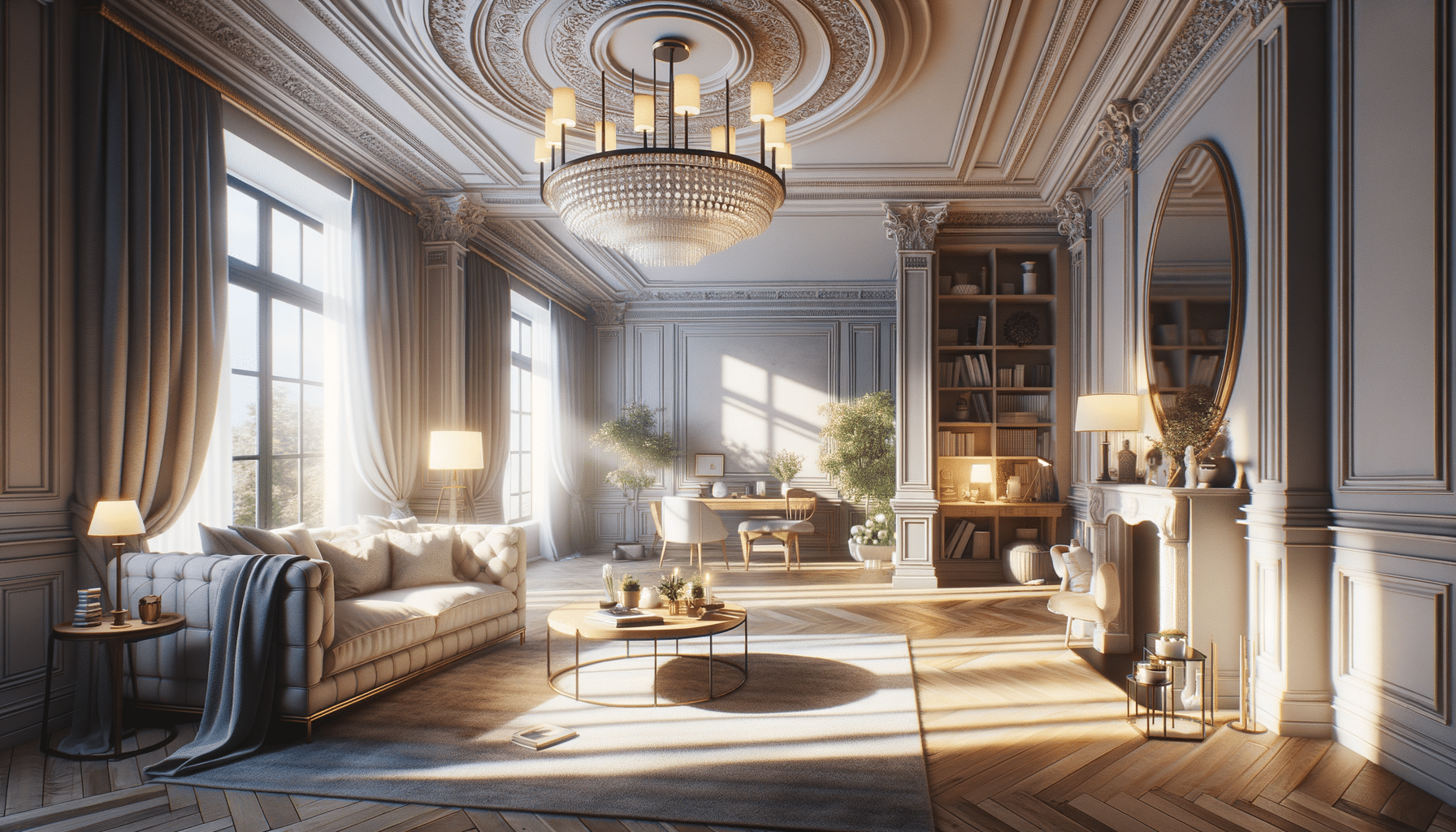
The Transformative Power of Ambient Lighting
Introduction to Ambient Lighting
In the world of interior design, ambient lighting plays a pivotal role in setting the tone and atmosphere of a space. It is the primary source of light that fills a room, providing a comfortable level of brightness without glare. Ambient lighting is more than just a necessity; it is a tool for creating mood, enhancing aesthetics, and improving the overall functionality of a space. This article delves into the significance of ambient lighting and its impact on our environments.
Ambient lighting is often referred to as “general lighting” and serves as the foundation of a lighting plan. It is essential for daily activities and is complemented by task and accent lighting to achieve a balanced illumination. By understanding the nuances of ambient lighting, homeowners and designers can transform ordinary spaces into extraordinary ones.
The Role of Ambient Lighting in Interior Design
Ambient lighting is integral to interior design, serving as the backdrop against which all other design elements are highlighted. It ensures that a room is adequately lit, allowing for safe and effective navigation. However, its role extends beyond mere functionality.
One of the primary benefits of ambient lighting is its ability to influence mood. Soft, diffused light can create a calming and inviting atmosphere, ideal for spaces such as living rooms and bedrooms. Conversely, brighter ambient lighting can energize a space, making it suitable for areas like kitchens and home offices.
In addition to mood setting, ambient lighting enhances the aesthetic appeal of a room. It highlights architectural features and complements the color scheme, making the space feel cohesive and well-designed. By strategically placing light sources, such as ceiling fixtures or wall sconces, designers can manipulate the perception of space, making rooms appear larger or more intimate.
Types of Ambient Lighting
There are several types of ambient lighting, each offering unique benefits and applications. Understanding these options allows for more informed decisions when planning a lighting scheme.
- Ceiling Fixtures: These are the most common sources of ambient lighting. Chandeliers, pendant lights, and recessed lighting provide widespread illumination, making them suitable for various room sizes and styles.
- Wall Sconces: Ideal for adding ambient light without occupying floor space, wall sconces can be used in hallways, living rooms, or bathrooms to create a warm and inviting ambiance.
- Floor and Table Lamps: These portable lighting solutions offer flexibility and can be easily moved to suit different needs. They are perfect for adding layers of light to a room.
- Track Lighting: Often used in modern designs, track lighting provides adjustable ambient light, allowing for customization and focus on specific areas.
Each type of ambient lighting serves a specific purpose, and combining them can result in a well-lit and harmonious environment.
Energy Efficiency and Ambient Lighting
With the growing emphasis on sustainability, energy-efficient ambient lighting has become increasingly important. By choosing the right lighting solutions, homeowners can reduce energy consumption and lower utility bills while maintaining the desired ambiance.
LED lighting has revolutionized the way we approach ambient lighting. These lights are highly efficient, consuming significantly less energy than traditional incandescent bulbs. They also have a longer lifespan, reducing the need for frequent replacements.
Another energy-efficient option is the use of dimmer switches. These allow for the adjustment of light intensity, providing flexibility in creating the perfect ambiance while conserving energy. Smart lighting systems offer even greater control, enabling users to program lighting schedules and remotely adjust settings via mobile devices.
By incorporating energy-efficient ambient lighting, individuals can enjoy beautifully lit spaces while contributing to environmental conservation.
Conclusion: The Impact of Ambient Lighting
Ambient lighting is a fundamental aspect of interior design that significantly influences the mood, functionality, and aesthetics of a space. By understanding its role and the various options available, individuals can create environments that are both beautiful and practical.
Whether aiming for a cozy, intimate setting or a bright, energetic atmosphere, ambient lighting offers the versatility needed to achieve these goals. As technology advances, the possibilities for innovative and energy-efficient lighting solutions continue to expand, allowing for even greater customization and efficiency.
Incorporating ambient lighting thoughtfully can transform any space, enhancing its appeal and making it a place where people love to spend time.


